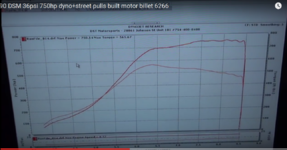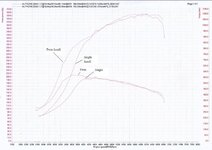GST with PSI
DSM Wiseman
- 2,729
- 1,509
- Jul 27, 2005
-
San Diego,
California
the dsport test is flawed because they used a twin scroll manifold on a open scroll turbo so power on the open scroll was less than it should have been.
How so? The open scroll turbine housing isn't affected by the TS manifold. The turbine housing essentially just becomes the collector for the manifold. So, how exactly does that equate to less power?


















